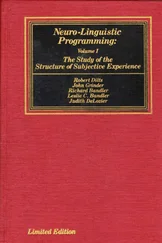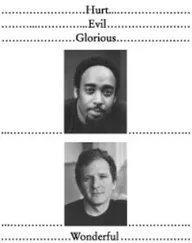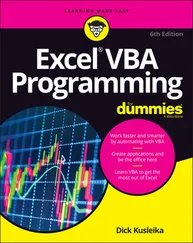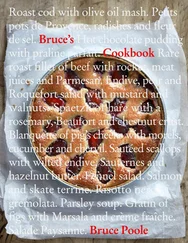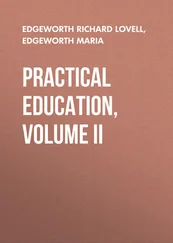Volume 2 of this book languished in a half-completed state for a long time while Bruce got distracted with other things, notably Java, Design Patterns and especially Python (see www.Python.org). If Chuck hadn’t been willing (foolishly, he has sometimes thought) to finish the other half and bring things up-to-date, this book almost certainly wouldn’t have happened. There aren’t that many people whom Bruce would have felt comfortable entrusting this book to. Chuck’s penchant for precision, correctness and clear explanation is what has made this book as good as it is.
Jamie King acted as an intern under Chuck’s direction during the completion of this book. He was instrumental in making sure the book got finished, not only by providing feedback for Chuck, but especially because of his relentless questioning and picking of every single possible nit that he didn’t completely understand. If your questions are answered by this book, it’s probably because Jamie asked them first. Jamie also enhanced a number of the sample programs and created many of the exercises at the end of each chapter.
Eric Crahen of IBM was instrumental in the completion of Chapter 11 (Concurrent Programming). When we were looking for a threads package, we sought out one that was intuitive and easy to use, while being sufficiently robust to do the job. With Eric we got that and then some—he was extremely cooperative and has used our feedback to enhance his library, while we have benefited from his insights as well.
We are grateful to have had Pete Becker as a technical editor. Few people are as articulate and discriminating as Pete, not to mention as expert in C++ and software development in general. We also thank Bjorn Karlsson for his gracious and timely technical assistance as he reviewed the entire manuscript with little notice.
The ideas and understanding in this book have come from many other sources, as well: friends like Andrea Provaglio, Dan Saks, Scott Meyers, Charles Petzold, and Michael Wilk; pioneers of the language like Bjarne Stroustrup, Andrew Koenig, and Rob Murray; members of the C++ Standards Committee like Nathan Myers (who was particularly helpful and generous with his insights), Herb Sutter, PJ Plauger, Pete Becker, Kevlin Henney, David Abrahams, Tom Plum, Reg Charney, Tom Penello, Sam Druker, and Uwe Steinmueller, John Spicer, Steve Adamczyk, and Daveed Vandevoorde; people who have spoken in the C++ track at the Software Development Conference (which Bruce created and developed, and Chuck spoke in); and often students in seminars, who ask the questions we need to hear to make the material clearer .
The book design, cover design, and cover photo were created by Bruce’s friend Daniel Will-Harris, noted author and designer, who used to play with rub-on letters in junior high school while he awaited the invention of computers and desktop publishing. However, we produced the camera-ready pages ourselves, so the typesetting errors are ours. Microsoft ®Word XP was used to write the book and to create camera-ready pages. The body typeface is Georgia and the headlines are in Verdana. The code type face is Andale Mono .
We also wish to thank the generous professionals at the Edison Design Group and Dinkumware, Ltd., for giving us complimentary copies of their compiler and library (respectively). Without their assistance some of the examples in this book could not have been tested. We also wish to thank Howard Hinnant and the folks at Metrowerks for a copy of their compiler, and Sandy Smith and the folks at SlickEdit for keeping Chuck supplied with a world-class editing environment for so many years. Greg Comeau also provided a copy of his successful EDG-based compiler, Comeau C++.
A special thanks to all our teachers, and all our students (who are our teachers as well).
Evan Cofsky (Evan@TheUnixMan.com) provided all sorts of assistance on the server as well as development of programs in his now-favorite language, Python. Sharlynn Cobaugh and Paula Steuer were instrumental assistants, preventing Bruce from being washed away in a flood of projects.
Dawn McGee provided much-appreciated inspiration and enthusiasm during this project. The supporting cast of friends includes, but is not limited to: Mark Western, Gen Kiyooka, Kraig Brockschmidt, Zack Urlocker, Andrew Binstock, Neil Rubenking, Steve Sinofsky, JD Hildebrandt, Brian McElhinney, Brinkley Barr, Bill Gates at Midnight Engineering Magazine, Larry Constantine & Lucy Lockwood, Tom Keffer, Greg Perry, Dan Putterman, Christi Westphal, Gene Wang, Dave Mayer, David Intersimone, Claire Sawyers, The Italians (Andrea Provaglio, Laura Fallai, Marco Cantu, Michael Seaver, Huston Franklin, David Wagstaff, Corrado, Ilsa and Christina Giustozzi), Chris & Laura Strand, The Almquists, Brad Jerbic, John Kruth & Marilyn Cvitanic, Holly Payne (yes, the famous novelist!), Mark Mabry, The Robbins Families, The Moelter Families (& the McMillans), The Wilks, Dave Stoner, Laurie Adams, The Cranstons, Larry Fogg, Mike & Karen Sequeira, Gary Entsminger & Allison Brody, Chester Andersen, Joe Lordi, Dave & Brenda Bartlett, The Rentschlers, The Sudeks, Lynn & Todd, and their families. And of course, Mom & Dad, Sandy, James & Natalie, Kim& Jared, Isaac, and Abbi.
Part 1.Building Stable Systems
Software engineers spend about as much time validating code as they do creating it. Quality is or should be the goal of every programmer, and one can go a long way towards that goal by eliminating problems before they rear their ugly heads. In addition, software systems should be robust enough to behave reasonably in the presence of unforeseen environmental problems.
Exception handling was introduced into C++ to support sophisticated error handling without cluttering code with an inordinate amount of error-handling logic. Chapter 1 shows how proper use of exceptions can make for well-behaved software, and also introduces the design principles that underlie exception-safe code. In Chapter 2 we cover unit testing and debugging techniques intended to maximize code quality long before it’s released. The use of assertions to express and enforce program invariants is a sure sign of an experienced software engineer. We also introduce a simple framework to help mitigate the tedium of unit testing.
Improving error recovery is one of the most powerful ways you can increase the robustness of your code.
Unfortunately, it’s almost accepted practice to ignore error conditions, as if we’re in a state of denial about errors. One reason, no doubt, is the tediousness and code bloat of checking for many errors. For example, printf( )returns the number of characters that were successfully printed, but virtually no one checks this value. The proliferation of code alone would be disgusting, not to mention the difficulty it would add in reading the code .
The problem with C’s approach to error handling could be thought of as coupling—the user of a function must tie the error-handling code so closely to that function that it becomes too ungainly and awkward to use .
One of the major features in C++ is exception handling , which is a better way of thinking about and handling errors. With exception handling the following statements apply: .
1.Error-handling code is not nearly so tedious to write, and it doesn't become mixed up with your «normal» code. You write the code you want to happen; later in a separate section you write the code to cope with the problems. If you make multiple calls to a function, you handle the errors from that function once, in one place.
2.Errors cannot be ignored. If a function needs to send an error message to the caller of that function, it «throws» an object representing that error out of the function. If the caller doesn’t «catch» the error and handle it, it goes to the next enclosing dynamic scope, and so on until the error is either caught or the program terminates because there was no handler to catch that type of exception.
Читать дальше

